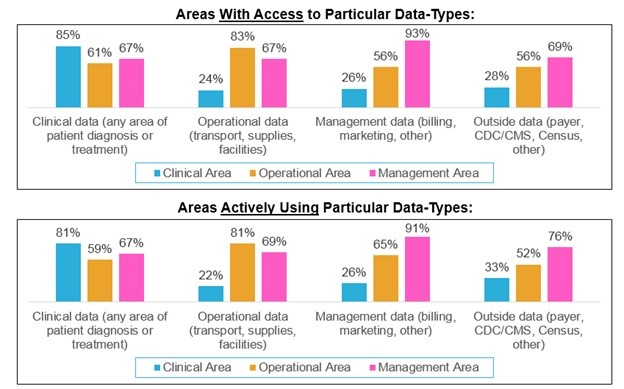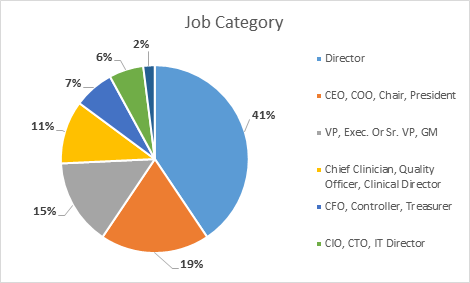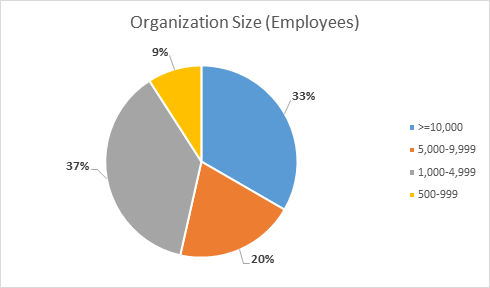Everyone in health care is talking about data and analytics these days and the vendor world has shifted into overdrive. So what is really going on in the trenches, and what does this mean for the future? Does this mean that we will finally find the holy grail of information-driven care?
Health and life sciences experts at SAS wanted to better understand how health care organizations are using and sharing their data. With the assistance of IDG Research Services, we conducted a Quick Pulse survey on health care data and analytics practices during March 2016.
About the survey
In order to participate in this six-question, online survey, respondents must be at a director-level or above and work for a health care institution with one or more hospitals and beds for acute inpatient care and at least 500 employees. The survey explored:
Areas or departments which have access to/use different types of data.
- Progress with data integration.
- Important data and analytics objectives.
- Use of data scientists within their organizations.
The charts below show distribution of job titles and organization size, for the 54 respondents:
The importance of data and analytics for patient care and engagement
In several ways, the survey results tell us that a lot of work related to data and analytics is underway. On the other hand, the results tell us that they’re not there yet.
The table below compares objectives versus practices for data and analytics in patient care and engagement. The majority of respondents highly rated the importance of each objective, which underscored the priority placed on data and analytics. However, in some objectives there is a significant gap in the importance ratings versus actual practices.
The survey revealed a dichotomy. Interdepartmental collaboration to use data for improvement was noted as Critical or Very important by 93 percent of respondents. However, only 74 percent believe this is Always or Usually True in their organizations. Similarly, 91 percent of respondents said the ability to personalize patient care and engagement using analytics is Critical or Very important. Yet only 76 percent believes this is Always or Usually True in their organizations.
Access to and use of data
Respondents emphasized that even though personalized care is a top objective, clinical teams are the least likely to have access to different data types outside of their specific area.
Similarly, respondents indicated that clinical staff are usually able to personalize patient care. However, these efforts may be based on incomplete data because organizations are inconsistent in ensuring that insights gleaned from data across all populations is easily accessible to patient-facing staff.
This highlights the continuing challenges with providing analytics-ready data at the point of service, where front-line professionals make clinical and operational decisions that affect lives and outcomes of patients and their families.
In Part 2 of this series, I’ll tell you about the progress that hospitals are making and sense of optimism about analytics leading the future.



